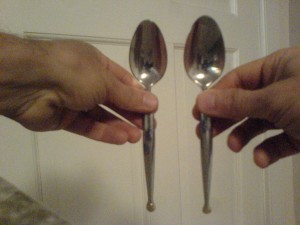 “Imagine a situation in which an elderly woman is able to live independently. She typically shops for her groceries every few days. When she arrives at her apartment door, she puts down the grocery bag, searchs for her key, opens the door, and then bends down to pick up the bag and carries it inside. Today, however, is different. She puts the bag down but can’t bend over far enough to pick it up. Luckily, a neighbor happens by to help her, but the problem persists. If she can’t get her groceries home, she is no longer able to take care of herself. Her adult children, fearing for her diminshed state, help her move to a nursing home.
“Imagine a situation in which an elderly woman is able to live independently. She typically shops for her groceries every few days. When she arrives at her apartment door, she puts down the grocery bag, searchs for her key, opens the door, and then bends down to pick up the bag and carries it inside. Today, however, is different. She puts the bag down but can’t bend over far enough to pick it up. Luckily, a neighbor happens by to help her, but the problem persists. If she can’t get her groceries home, she is no longer able to take care of herself. Her adult children, fearing for her diminshed state, help her move to a nursing home.
Now consider this scenario. An elderly woman living independently comes back to her apartment with her groceries. She places the bag on a small shelf outside her door, searcher for her keys, opens the door, and carries in her grocery bag. In the first case, the woman is considered too frail to care for herself, but not in the latter. The only difference is a small piece of wood serving as a shelf”. (Ellen Langer, Counterclockwise. New York, Ballantine Books.)
“The only difference is a small piece of wood.” Chapter 5 of Langer’s book (Reeingineering medical rules) should be mandatory reading in design curricula. Design makes a huge difference in those borderline cases in which a single, microscopic step takes you from being considered as healthy to being treated medically. And the key to design is mindfulness.




